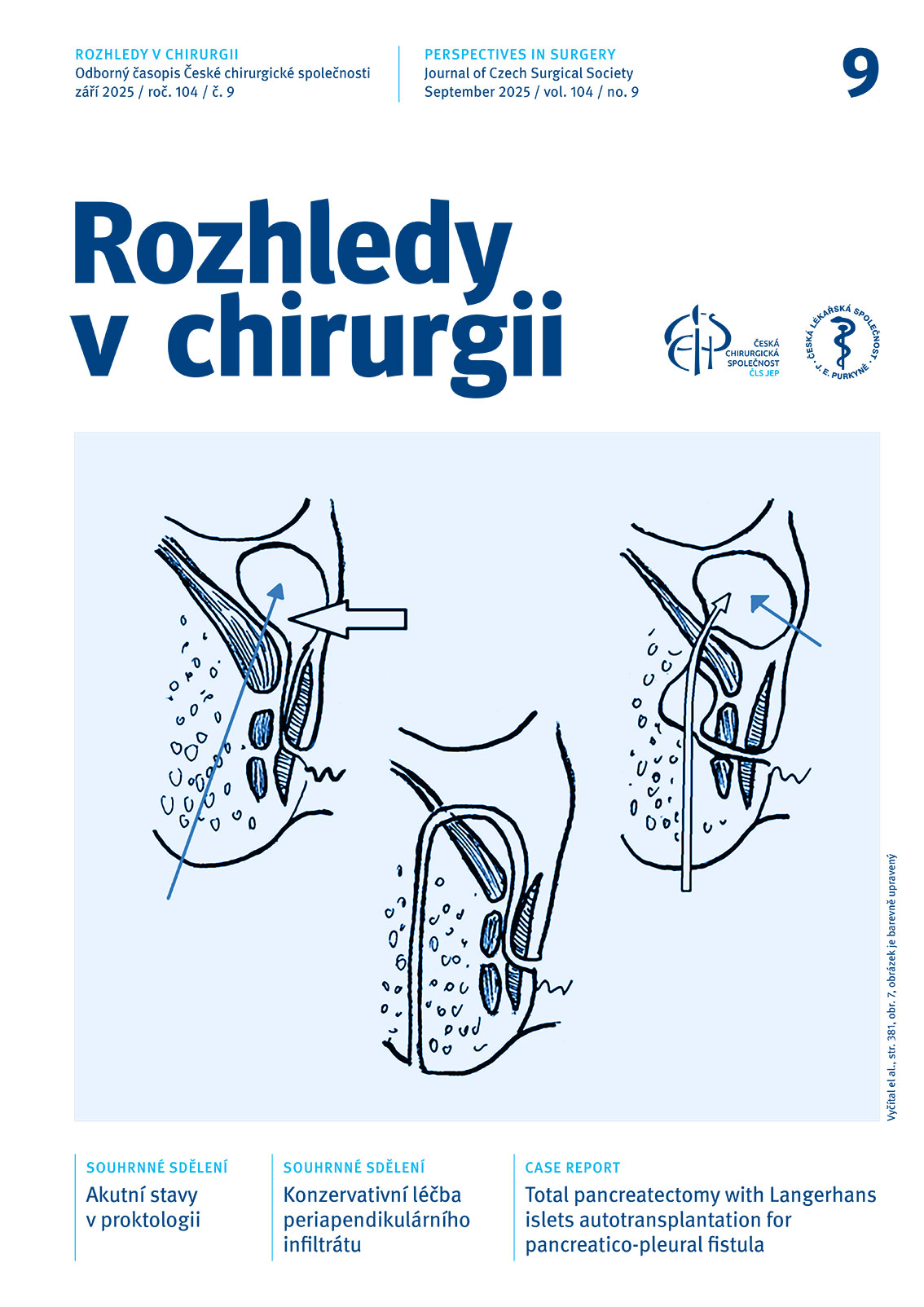Abstrakt
Úvod: Akutní apendicitida je náhlý zánět červovitého přívěsku slepého střeva, známého jako apendix. Tento stav je jednou z nejčastějších příčin akutní bolesti břicha a může vést k nutnosti urgentního chirurgického zákroku. Periapendikulární infiltrát je komplikací akutní apendicitidy, kdy se kolem zaníceného apendixu vytváří masa z tkání a orgánů v břišní dutině. Naše práce měla za cíl vytipovat pacienty s periapendikulárním infiltrátem anebo abscesem, u kterých byl primárně zvolen konzervativní postup, zhodnotit způsob a úspěšnost dané léčby a srovnat naše výsledky s českými i zahraničními publikacemi.
Metoda: Retrospektivní analýza dat souboru pacientů s konzervativně léčeným periapendikulárním infiltrátem na našem pracovišti v období od ledna 2020 do prosince 2024 a porovnání výsledků s českou i zahraniční literaturou.
Výsledky: Počet pacientů s akutní apendicitidou za dané období byl 433, z toho 13 (3,0 %) bylo léčeno primárně konzervativně intravenózními antibiotiky a byl u nich popsán periapendikulární infiltrát na zobrazovacích metodách. Jednalo se o 9 mužů (69,2 %) a 4 ženy (30,8 %), průměrný věk byl 57,7 roku. U 12 (92,3 %) bylo vstupně provedeno CT, u 8 (61,5 %) byl přítomen absces, z toho 6× byla provedena CT navigovaná drenáž. U 12 pacientů (92,3 %) byla konzervativní léčba úspěšná a bez recidiv, elektivní apendektomie byla doplněna u 4 pacientů (30,8 %).
Závěr: Ačkoli je naše práce omezená počtem pacientů, její výsledky potvrzují trend pozorovaný v zahraničních studiích – konzervativní postup s intravenózně podávanými antibiotiky případně doplněný o CT navigovanou drenáž abscesu je adekvátní a úspěšnou léčbou u vybraných pacientů s periapendikulárním infiltrátem.
doi: 10.48095/ccrvch2025387


